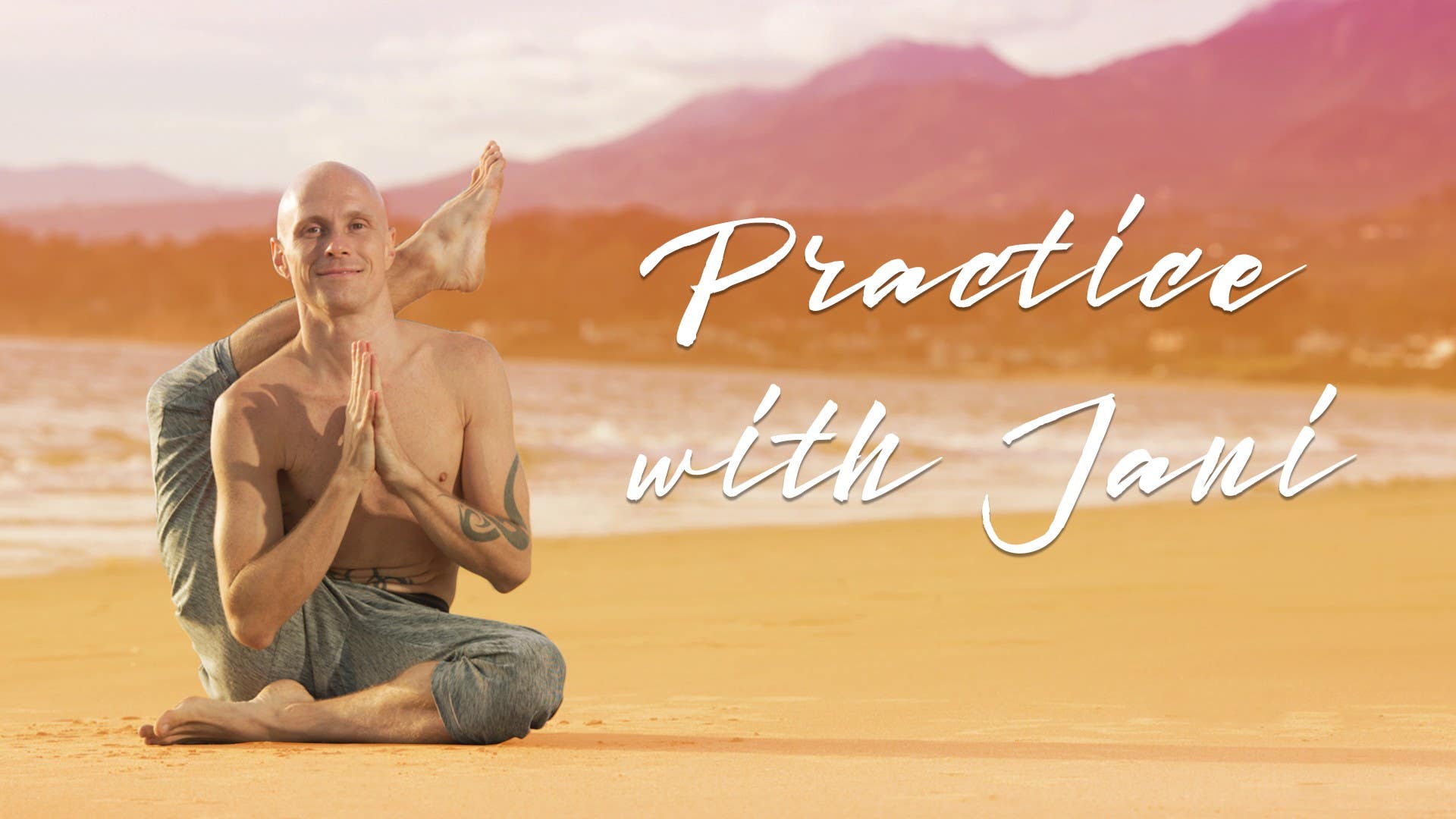Description
About This Video
Transcript
Read Full Transcript
(waves splashing) And this second technique is called ardha tha jathara bhedana. So this is second abdominal breathing. ardha means half, tha is again expansive and then the jathara is belly and bhedana means breathing. So in this technique, this is almost similar that the previous one what we just did so that the breathing itself is passive. So when you do the inhalations, belly is moving out.
Don't try to move it actively out because then we, then we, it doesn't really work. So you should to relax the abdomen and then when you do inhalation, what happens it start to move out if the abdomen is relaxed. And when you do exhalation it's moving in, breathe a couple of times, then try to feel the diaphragm. Feel how the inhalation is moving down contracting, the exhalation is expanding and moving up. So this is all saying what we done in the previous technique.
And now start to observe the lower ribs, floating ribs. So when you do inhalation, lower ribs going little bit out. When you move, do exhalation, floating ribs move little bit in. So inhale, exhale. And now by observing this floating ribs, it more easy to get connected to the dome of the diaphragm.
Which is the part between the lungs and the diaphragm, just to remind. So, when you connect to the dome of the diaphragm, now we try to restrict the movement of the dome of the diaphragm. So, not really controlling the breathing but controlling the space between the lungs and diaphragm. Don't force to stop it but a little bit try to restrict the movement. And what happens now if you do this is that movement has to go somewhere so there's more action in the thoracic, so chest start to move more than in previous technique, (mumbles) the purna tha jathara bhedana.
So there's more movement on the chest now. So when you do the inhalation, belly is moving out, chest is moving a little bit in. And when you do exhalation, belly is moving in and chest is moving out. And this is not because you try to control the belly and chest but because you try to control this dome of the diaphragm between the lungs and diaphragm. So let's try it.
So inhale, relax abdomen and try to hold dome of the diaphragm floating ribs, relatively still and exhale. Same thing, but you keep the breathing exhale passive, and natural. So breathing itself is passive. It supports and supports the calming the mind and nervous system. But when we have the control here in the dome of the diaphragm, that little bit keep the mind still partly active and involved.
So this is good, a good breathing technique when we do that inversions. Because inversions then the nature of the inversions, they are active postures, like the headstand and shoulder stand. They are active postures but they are also many times they are end of the sequence because they are considered a subtle group of asanas. We teach that they are actually they have lots of restorative effect effect that helps to actually calm down the nervous system and the mind. So, we take here sarvangasana.
So we use the sarvangasana as an example. So lie on your back, and feet together, rotate upper arms out, rotate shoulders out. And then inhale, legs up. Exhale and then inhale legs over the head. And then support your lower shoulder blades and then come up to the posture, okay?
So now when you do the inhalations keep the breathing passive but control the movement of the dome of the diaphragm. And also when you do the exhalations, same thing, keep the breathing itself passive. But keep the dome of the diaphragm controlled. (inhaling and exhaling) And you maybe notice there's little bit more movement in the chest now. (inhaling and exhaling) And then exhale slowly, legs down and start vertebra by vertebra (mumbles).
Slowly come out of the posture. And then you can turn on your right side and come up. So this is purna, sorry, ardha tha jathara bhedana. This is a good, a good breathing practice for the inversions, head stand, shoulder stand, and also little bit more advanced level it works with the pinch, pincha mayurasana, then adho mukha vrksasana handstand. Thank you.






You need to be a subscriber to post a comment.
Please Log In or Create an Account to start your free trial.